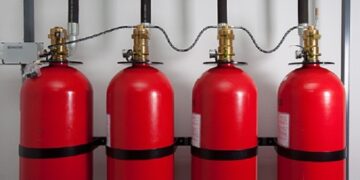To protect the outside of the house from the weather, as well as to create a more aesthetic appearance, siding is often used. In the 50s of the twentieth century, it was invented in America. And to this day, this material is quite common in construction, only its purpose has expanded significantly: houses, various buildings, even a siding fence.
The surface of the panel can be absolutely anything: smooth or textured; can be an imitation of wood or stone. Panels are from two to ten meters long and from 10 to 30 centimeters wide. There are also panel densities. For example, for the basement, more durable panels with a higher density are made.
Most often, siding is made of polyvinyl chloride. It does not shrink over time, does not absorb water and, accordingly, does not rot. The main care for such panels is periodic cleaning of dust. It is enough to wash it once a year. You don’t even need special tools for this, just water. There are also siding made of: aluminum, fiber cement, there are panels made of wood-polymer composites.
Fire resistant material. When ignited, siding does not burn, only melts. But, unfortunately, various chemical compounds are released that are harmful to human health.
Easy to install siding. Installation can be done at any time of the year. First, a crate of metal guides is mounted. Insulation is inserted inside. It can be foam, mineral wool or any other. On the modern market a large selection of different materials for wall insulation. And everything is sewn up with siding.
The material itself is quite light. Will not cause serious injury if dropped. Also, the walls and foundation experience less load than when facing them with stone. This plays a big role if construction is carried out in a seismically hazardous area. The lighter the house, the less the likelihood of major damage during an earthquake.
What to consider when choosing siding?
– Price. Don’t buy cheap stuff. The lower the price, the worse the quality. Cheap siding may not withstand the extreme cold in winter, and cracks will appear. Precipitation will fall into them, which can lead to the destruction of the insulation or the walls as a whole.
– Color. Choose neutral, not very bright, pastel colors. In the bright sun, the colors will begin to fade and the walls will take on an unpresentable appearance.































